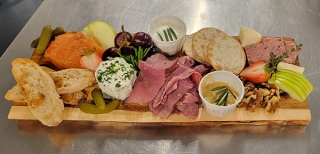
Teaching Modern Students an Often-underappreciated Craft: Charcuterie
03 September 2024In an industry with tight margins and differentiation a challenge, creating high-quality, house-made charcuterie isn’t just a culinary skill—it's a valuable business asset.
By Pierre Checchi, Kendall College
Feedback & comments: This email address is being protected from spambots. You need JavaScript enabled to view it.
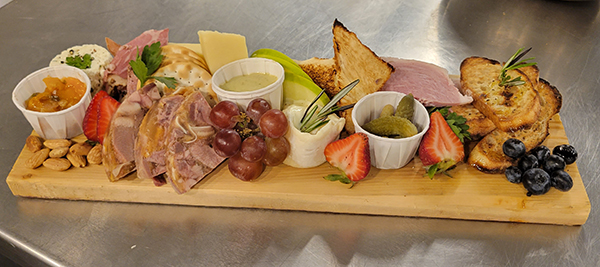 In the ever-evolving hospitality landscape, certain culinary traditions stand the test of time, continually reinventing themselves while staying true to their roots. Among these, the art of Garde-Manger, particularly its subset of charcuterie, has emerged as a powerful tool for enhancing guest experiences, boosting profitability and showcasing culinary expertise. Let’s delve into the rich history of Garde-Manger, its modern applications and compelling reasons why mastering this art can significantly benefit hospitality professionals.
In the ever-evolving hospitality landscape, certain culinary traditions stand the test of time, continually reinventing themselves while staying true to their roots. Among these, the art of Garde-Manger, particularly its subset of charcuterie, has emerged as a powerful tool for enhancing guest experiences, boosting profitability and showcasing culinary expertise. Let’s delve into the rich history of Garde-Manger, its modern applications and compelling reasons why mastering this art can significantly benefit hospitality professionals.
A legacy of culinary craftsmanship
Garde-Manger, French for "keeper of the food," originated in medieval kitchens where it referred to the cool, well-ventilated rooms used for storing perishables. Over time, it evolved into a culinary department responsible for cold food preparation, including salads, hors d'oeuvres and, most notably, charcuterie.
Charcuterie, the ancient art of preserving and enhancing meats, stands at the heart of Garde-Manger. Its history spans centuries, deeply embedded in European culinary traditions. From French saucisson to Italian prosciutto and Spanish chorizo, each region has contributed its unique flavors and techniques to this rich tapestry of culinary artistry.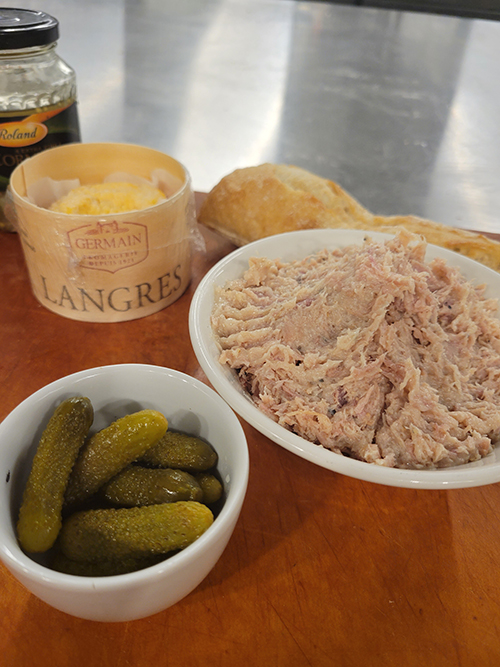
The renaissance of Garde-Manger in modern hospitality
In today's hospitality landscape, Garde-Manger has experienced a renaissance, with charcuterie at the forefront. This revival is driven by several factors:
- Culinary authenticity: In an era where guests crave authentic experiences, house-made charcuterie offers a genuine taste of tradition and craftsmanship.
- Sustainability: The "nose-to-tail" philosophy inherent in charcuterie aligns perfectly with modern sustainability practices, reducing waste and maximizing resource utilization.
- Flavor innovation: Charcuterie provides a canvas for chefs to experiment with flavors, combining traditional techniques with contemporary tastes.
- Visual appeal: Beautifully arranged charcuterie boards serve as edible art, enhancing the overall dining experience and providing Instagram-worthy moments.
Educating the next generation of culinary professionals
In an era of rapid culinary innovation, it's crucial to expose culinary students and young professionals to the timeless art of charcuterie. To cultivate appreciation for "old school" techniques, educators and industry leaders should adopt a multifaceted approach. Incorporating hands-on charcuterie workshops into culinary curricula allows students to experience the entire process from meat selection to final product while teaching the rich history and cultural significance alongside modern techniques helps students understand its enduring relevance.
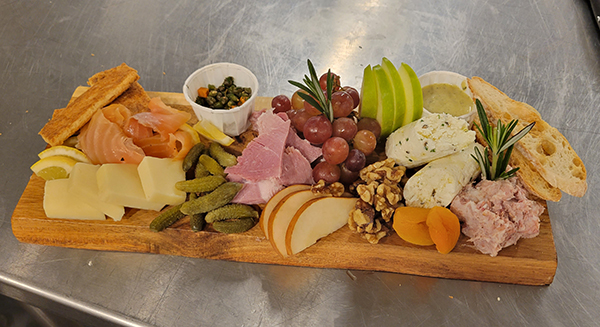 Emphasizing how charcuterie aligns with contemporary sustainability practices appeals to environmentally conscious young chefs, bridging the gap between traditional and modern values. Collaborations with local restaurants and artisanal producers provide real-world exposure to professional charcuterie operations, offering invaluable insights into industry practices.
Emphasizing how charcuterie aligns with contemporary sustainability practices appeals to environmentally conscious young chefs, bridging the gap between traditional and modern values. Collaborations with local restaurants and artisanal producers provide real-world exposure to professional charcuterie operations, offering invaluable insights into industry practices.
To spark creativity, students should be encouraged to experiment with traditional charcuterie techniques using unconventional ingredients or creating plant-based alternatives, fostering innovation while respecting tradition. Integrating lessons on the business benefits of charcuterie, including cost analysis and marketing strategies, will demonstrate its relevance in modern hospitality operations.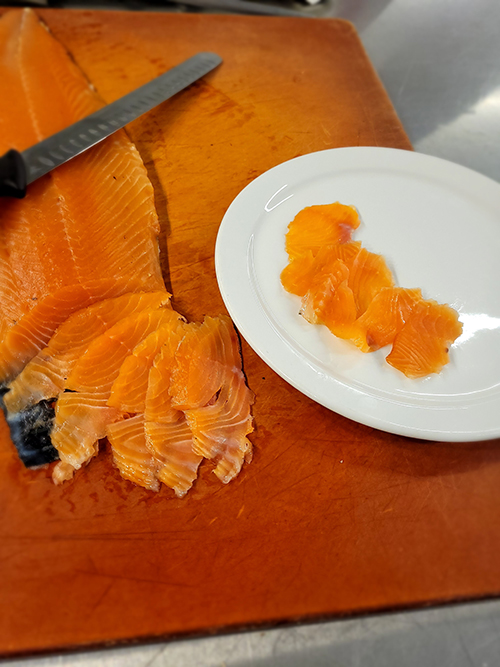
The business case for charcuterie mastery
Understanding and implementing the art of charcuterie can significantly impact an operation’s bottom line:
Enhanced profitability
- High margins: House-made charcuterie often commands premium prices, offering higher profit margins compared with purchased products.
- Waste reduction: Utilizing all parts of the animal ("tail to snout") minimizes waste and maximizes yield, directly impacting profitability.
- Extended shelf life: Proper curing and preservation techniques extend the shelf life of meats, reducing spoilage and associated costs.
Brand differentiation
- Unique selling proposition: House-made charcuterie sets an establishment apart, offering a unique selling point in a competitive market.
- Craft narrative: The story behind house-made products adds value, allowing for compelling marketing narratives that resonate with guests.
- Local identity: Incorporating local ingredients and traditions into charcuterie can strengthen an establishment's connection to its locale.
Menu versatility
- Cross-utilization: Charcuterie products can be incorporated across the menu, from appetizers to main courses, maximizing their utility.
- Seasonal adaptability: Charcuterie allows for seasonal menu changes without significant overhauls, keeping offerings fresh and relevant.
Guest experience enhancement
- Interactive dining: Charcuterie boards encourage sharing and conversation, enhancing the overall dining experience.
- Educational opportunities: Staff knowledgeable about house-made charcuterie can lead to engaging tableside discussions, deepening guest appreciation and potentially increasing sales.
Implementing charcuterie into the operation
Take time to create guided tastings to develop students' palates, enabling them to appreciate the nuanced flavors and textures of various charcuterie products. By immersing your students in both the craft and business aspects of charcuterie, we can ensure that these time-honored techniques continue to evolve and thrive in the hands of the next generation of culinary professionals. To successfully integrate charcuterie into your hospitality offering:
- Invest in training: Ensure your culinary team is well-versed in safe and proper charcuterie techniques.
- Start small: Begin with a few signature items before expanding your range.
- Emphasize quality: Source high-quality, preferably local, ingredients to ensure superior products.
- Tell your story: Communicate the craftsmanship behind your charcuterie to guests through menu descriptions, staff knowledge, and marketing materials.
- Pair thoughtfully: Offer wine, beer, or cocktail/mocktail pairings to complement your charcuterie, potentially increasing beverage sales.
Conclusion
The art of Garde-Manger, particularly charcuterie, offers hospitality professionals a unique opportunity to blend tradition with innovation, enhance guest experiences, and improve profitability. By mastering this culinary craft, establishments can differentiate themselves in a competitive market, reduce waste, and create memorable dining experiences that keep guests coming back for more.
In an industry where margins can be tight and differentiation challenging, the ability to create high-quality, house-made charcuterie is more than just a culinary skill—it's a valuable business asset. As we look to the future of hospitality, the timeless art of charcuterie stands as a testament to the enduring power of culinary craftsmanship and its ability to delight guests while driving business success.
